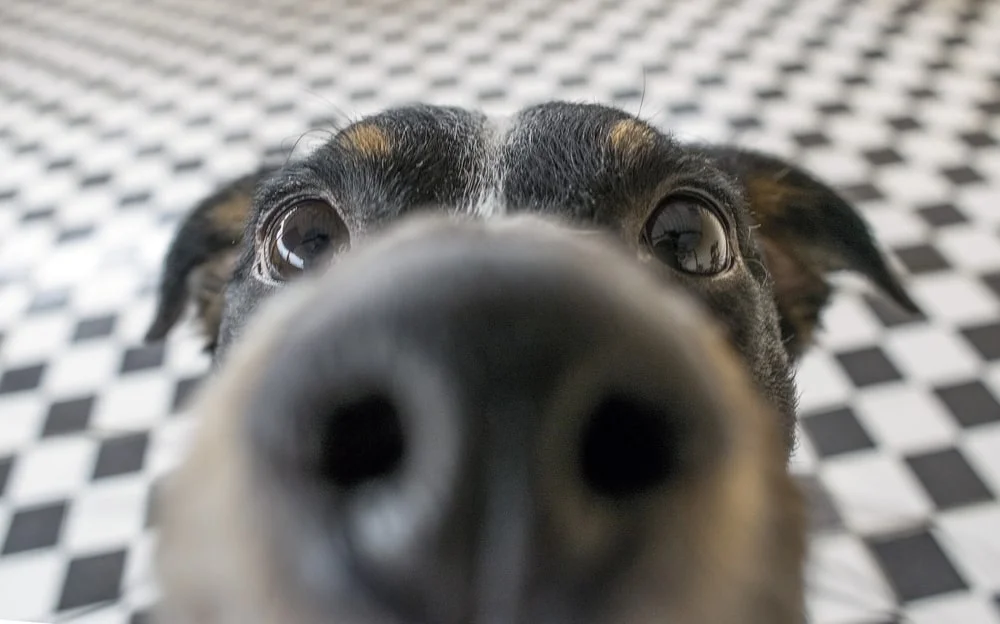PET HEALTH
Does your dog breathe heavily often or snort frequently? While you may see it as one of the many cute quirks you love about your pet, it could be a sign of a more serious respiratory issue that needs medical attention.
Stenotic nares surgery is performed on specific dog breeds to help them overcome respiratory problems. Typically, you can expect the stenotic nares surgery cost to be anywhere between $500 and $2,000.1 Veterinarians often perform stenotic nares surgery at the same time a dog is already under anesthesia for another procedure, like a spay or neuter, which may result in cost savings.1
To fully understand stenotic nares surgery, you must first understand brachycephalic obstructive airway syndrome (BOAS), which causes the need for this procedure.
What Is Brachycephalic Airway Syndrome?
Brachycephalic obstructive airway syndrome (BOAS) is a condition that results in abnormalities of the upper airways in dogs, including stenotic nares. Stenotic nares refer to nostrils that are small or narrow, resulting in restricted airflow.2
Symptoms of brachycephaly can include difficulty breathing, breathing more through the mouth than the nose, snoring when asleep or relaxed, and breathing that gets louder with activity.2 Frequent coughing or gagging are also signs of BOAS. Symptoms may also worsen in hot or humid weather because brachycephalic dogs struggle to regulate their temperatures and can overheat.3
Other abnormalities brachycephaly-susceptible dog breeds may experience include elongated soft palates, which means the dog’s soft palate is too big and obstructs the windpipe. As a result of stenotic nares or an elongated soft palate, laryngeal saccules (sacs located inside the larynx) can become everted, or turned outward, making airflow even more difficult.
If your dog exhibits any symptoms of brachycephaly, see your veterinarian for a consultation to determine if they could benefit from stenotic nares surgery.
Dog breeds affected by BOAS
Brachycephalic airway syndrome affects dogs with shortened heads. In fact, brachycephaly translates from Greek to “short head.”1 Breeds that can be susceptible to BOAS include:
- French bulldogs
- English bulldogs
- Pugs
- Boston terriers
- Boxers
- Shih tzus
- Lhasa apsos
- Bullmastiffs
What Is Stenotic Nares Surgery for Dogs?
Stenotic nares surgery involves removing a small portion of a dog’s nostrils.1 Increasing the size of the nostril makes breathing easier and may reduce snoring and other symptoms.
Stenotic nares surgery can be completed using a scalpel or a laser to remove a wedge from the outer fold of each nostril. Using a laser may result in less bleeding because it cauterizes as it works. The use of a laser may also mean stitches aren’t required and can speed up recovery time. However, the use of expensive equipment like lasers can also increase the cost of the procedure.1
It’s recommended to have stenotic nares surgery performed on your dog as early as possible in their life.4
Some brachycephalic dogs also need stenotic nares surgery to fix other conditions that restrict their breathing, including a hypoplastic trachea and elongated soft palate.5
Other FAQs About Stenotic Nares Surgery
We get it — you just want your dog to breathe easier. Let us answer some more questions to help you breathe easier, too.
Is stenotic nares surgery necessary?
If you don't treat your dog's stenotic nares, the added pressure may cause their windpipe to collapse, which has resulted in some fatal cases.1
Additionally, a dog who has to work hard to breathe over a long period of time is putting greater strain on their heart.2 The procedure is highly recommended to help your dog live comfortably and help mitigate long-term health issues associated with BOAS.
What can I expect after stenotic nares surgery?
A dog’s stenotic nares surgery recovery may involve some discharge from the nose in the first few days after the procedure. This discharge can be clear or slightly bloody. They may also experience some sneezing.4 Call your vet if your pup has any continued or worsened symptoms.
Your dog may also look slightly different after stenotic nares surgery. The difference, if any, won’t be dramatic, but you may notice the nostrils look a little bigger.4
It’s also important to make sure your dog takes it easy for about a week following surgery.
Is stenotic nares surgery successful?
As with any surgery, success rates for stenotic nares surgery depend on a number of factors. However, the surgery can decrease the severity of BOAS symptoms in your dog or eliminate it altogether for some dogs.7
Pet Insurance May Help Cover Stenotic Nares Surgery Costs
You may be wondering, “Is stenotic nares surgery covered by pet insurance?”
If your furry friend’s brachycephaly isn’t determined to be a pre-existing condition, dog insurance may help cover the costs of stenotic nares surgery. Thor, a French bulldog, had brachycephalic syndrome and had surgery to improve his breathing. His family was reimbursed for nearly $2,500 of the $3,000 bill.7
Get a free quote today for pet insurance so you can focus on your pet’s health.
Brachycephaly Can Be Scary. Vet Bills Don’t Have To Be.


